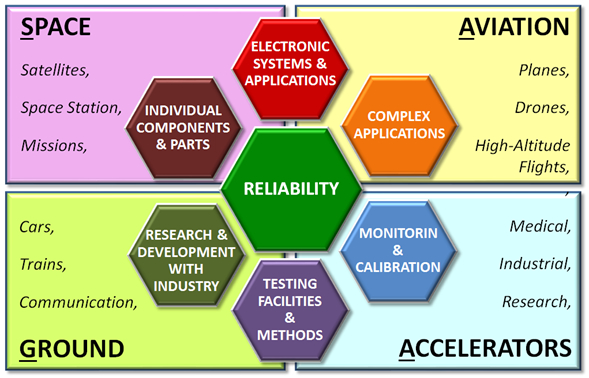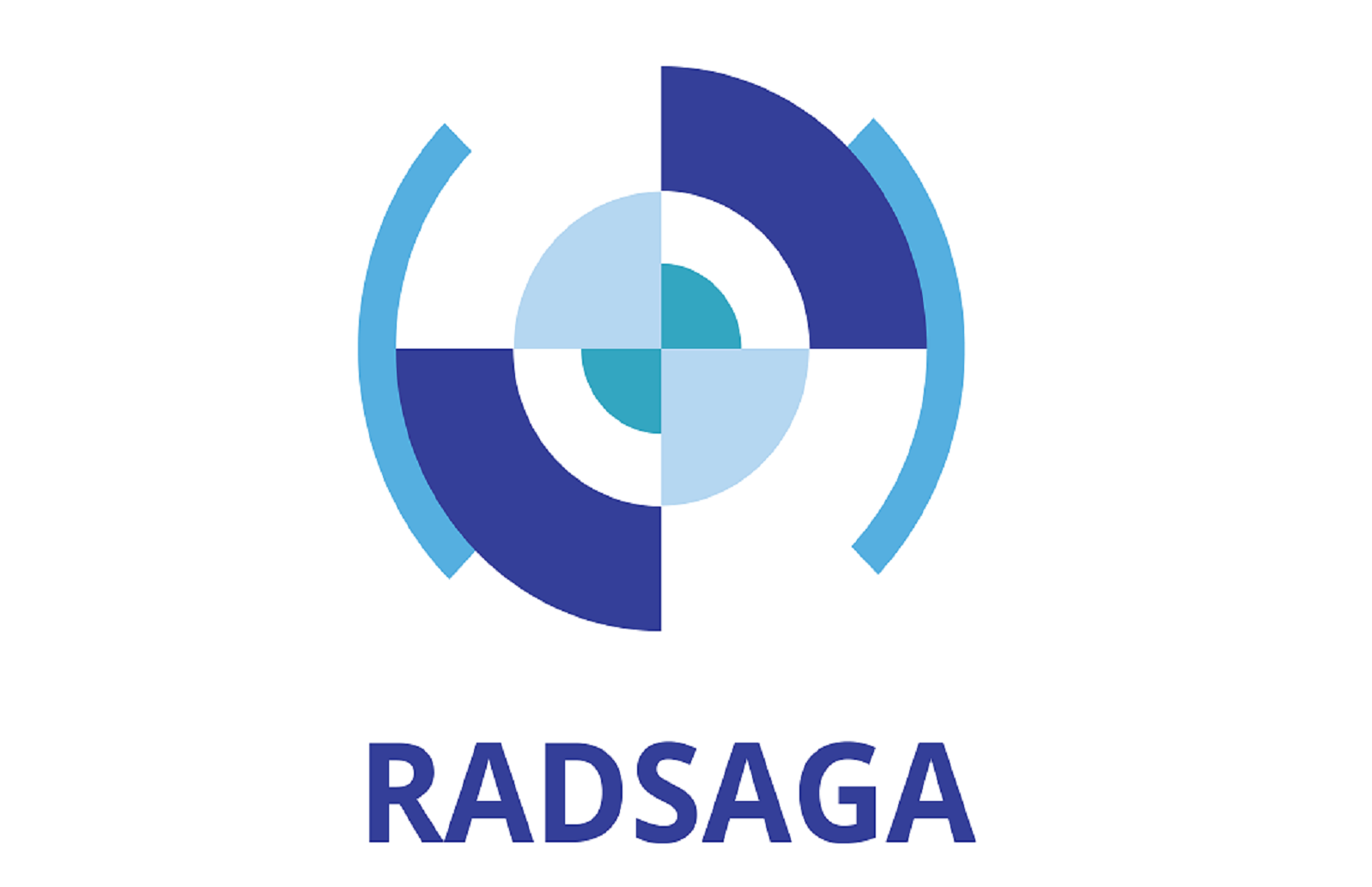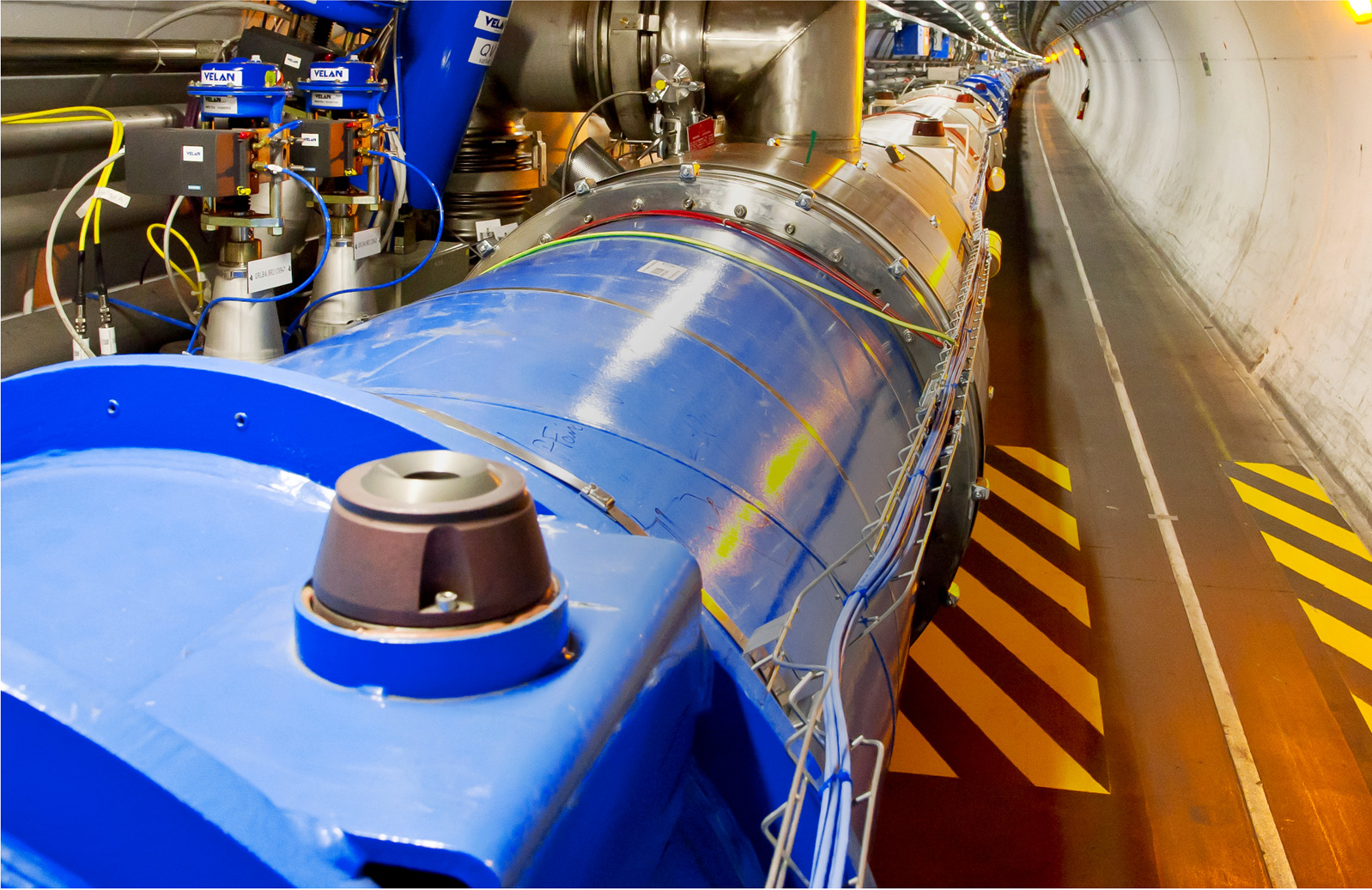The RADSAGA Innovative Training Network
The proposed RADSAGA training network provides an intersectoral structure based on a unique mixture of private companies, universities and national laboratories, as well as other organisations, aiming together for a lasting training network with high scientific standards and practical industrial implementation (see Figure 1).

Figure 1: The included intersectoral network partner and beneficiary types.
Excellence:
As illustrated in Figure 2, "Reliability" is essential for safe operation and optimized efficiency within all four application areas where radiation effects on electronics are and have to be considered: e.g. satellites must not fail as repair interventions are impossible to be carried out; the safety of electronic systems in avionics is of utmost importance and must be ensured in spite of the high-altitude radiation levels; planes, cars, trains & communication systems integrate a constantly increasing number of electronic components, increasingly complex, where even relatively low radiation levels can lead to important risks; and finally operation and safety systems at accelerators require a high mean-time-between failures for reaching ultimate design goals and achieving scientific breakthroughs.

 Figure 2: Application areas where reliability issues and radiation effects are of increasing importance.
Figure 2: Application areas where reliability issues and radiation effects are of increasing importance.
While not of concern several years ago, the following questions are examples for what nowadays and especially in the coming years affects high reliability technology surrounding us: (i) A car embeds more and more complex electronic devices that will control the wheel direction or breaks. Is it still as reliable and safe as it used to be, e.g. also in case of solar flares? (ii) Can a pacemaker be affected by cosmic radiation at sea level or during flight? (ii) Why can an observed anomaly of an equipment/device or other failure modes not be reproduced at a dedicated test station while it happened during operation? (iii) Is it possible to qualify and perform radiation tests of parts or complete systems, perhaps even an entire satellite, an electronic avionic control or an electric car power system? (iv) How can accelerated tests of a few hours be representative of effects which may occur or evolve all along the lifetime of electronic systems (for instance > 20 years)?
Some examples on how these radiation reliability questions are addressed and the respective challenges the related industry faces are:
- for avionic control systems, more than 30% of the computation power available is used to ensure fault tolerance; a specific challenge (e.g. for Airbus) is to avoid a further increase while more integrated and complex electronic components are used in avionic equipment (for new design or obsolescence management), with component showing an increased radiation sensitivity.
- for avionic applications, an analysis performed by Airbus Group showed that already nowadays 20% to 50% of the equipment removal for unscheduled maintenance are classified as "No Fault Found" (NFF) among which around 10% are due to radiation effects. Each unscheduled removal has an important cost impact. At the same time safety is currently obtained for the most critical functionalities by using a high level of redundancy (based on dissimilar hardware and software). This will clearly not be possible for cars which are more and more affected by radiation (e.g. in the case of smart power applications).
- for today's satellites, at the NSREC 2011 conference R. Ecoffet (CNES) provided in his short course "On-Orbit Anomalies: Investigations and Root Cause Determination" a figure of merit for failures within space application. Within CNES and a fleet of 16 LEO satellites one observes 1 minor radiation induced anomaly per week and 1 major one every month, leading to a total share of 90% of all operation problems. This is again challenged by new developments where individual testing of components becomes a high cost and delay factor.
In addition, this is to be seen in the context of competiveness and the requirement to integrate new technologies faster. E.g. for the new Ariane-6 programme an overall cost reduction of a factor of two has to be achieved, coupled with a very aggressive electronics development programme. This also applies for avionic applications where wear-out and combined effects (ageing and radiation) are putting clear limits to next generations of electronic components.
These questions in mind, the proposed training network together with the scientific projects included in RADSAGA ("RADiation and Reliability Challenges for Electronics used in Space, Aviation, on the Ground and at Accelerators") will prove important for the competitiveness of the European industry. Indeed, on short- and medium-terms, the consideration of radiation effects will become as important as thermal or mechanical constraints. This has been a must for the space industry for many years and today is already considered by the aviation industries and related fabs/foundries. Tomorrow it will be required by the car industry, in medical devices, and other industrial sectors where reliability is of essence. This evolution is also introduced in a French television reportage:
Video 1: Radiation effects on electronic devices.
As further detailed in the following sections in the training context, the RADSAGA ESR projects will focus on the four applications areas (Space, Aviation, Ground and Accelerators) where electronics is affected by radiation and industry requires research on:
- an efficient selection of electronic components and respective quality assurance;
- radiation test methodologies, carried out at both: so-called mono-energetic test facilities, but also in dedicated mixed-beam facilities able to reproduce the actual radiation environment the electronics is exposed to and respective dosimetry and benchmarking;
- the development of design and test guidelines validated for mixed radiation-field environments;
- the importance of detailed radiation monitoring and respective calibration methods, used both during test campaigns, as well as during operation in the various application areas.
In this context, the young engineers and scientists trained within RADSAGA will provide Europe with future experts for reliability of electronics in various radiation environments. They are not only needed for the identified projects addressed within the context of the framework, but also for the next generation of ground and avionic applications, European and International Space missions including the new ARIANE-6 and future developments, as well as Large Scale Facilities for Nuclear Physics. They are critical and will no doubt have great demand for experts with the acquired skills. This network's contribution to the well-defined long-term European roadmap will for many years ensure a vigorous job market for their talents and expertise. This ITN as the seed, beyond the timeline of the Marie-Curie proposal, RADSAGA will provide a network foundation to which other partners can and will join in the future in order to ensure our industrial and scientific competitiveness within all related sectors.
Quality, innovative aspects and credibility of the research programme (including inter/multidisciplinary and intersectoral aspects):
Introduction, objectives and overview of the research programme
As the semiconductor industry progresses, the technological impact of radiation effects becomes more and more important. In order to produce the extremely fine geometries required at high levels of integration, the transistors become smaller and the integrated circuits are getting more sensitive to parasitic charges induced by radiation [1], [2], [3], [4]. One example of an important concern at the small geometries of current and future integrated circuits is the phenomenon known as latch-up [5], [6]. This refers to the triggering of the parasitic SCR (semiconductor-controlled rectifier) present in CMOS (complementary MOS) circuits on silicon substrate, and initiated under normal operating conditions. This phenomenon has become a major concern, even a show stopper in many applications, which is also relevant for ground and avionic applications [7], [8], [9]. Several presentations from universities as well as industry have been addressing this in increasing rate as also visible in the RADSOL presentations available at [10]. Moreover, the 2012 RADECS conference organized a RADGROUND day (also available through [10]) where high-impact companies provided dedicated presentations like Continental (radiation effects in the car industry), INTEL and TI (component reliability challenges) as well as J. Wilkinson from Medtronic (U.S.) addressing the problem of modern pace makers being sensitive to cosmic radiation. The development of technologies used in the various sectors together with recent radiation concerns are shown in Figure 3.
At the same time, there is a significant number of specialized applications requiring ICs that have a known, predictable response to ionizing radiation. E.g. satellite systems which need electronic components that can operate in the harsh radiation environment around the earth and in space. Without such components, satellites for communication, surveillance, resource mapping, etc. would have extremely limited capabilities; it would be almost impossible to conduct interplanetary explorations such as the upcoming JUICE (JUpiter ICy moons Explorer) mission. In a similar challenging way, accelerator facilities (scientific or medical) as well as nuclear power plants need control electronics and instrumentation which can withstand their partly harsh environment and continue to function and provide reliable data. However, specialized solutions are often not applicable or competitive for large industrial applications. At the same time these applications often pose additional challenges due to the nature of highly distributed systems and additional challenges like ageing over long operation periods. This clearly calls for tailored design and qualification guidelines to be developed in this ITN.
The trend toward small devices has made normal commercial ICs (integrated circuits) more and more susceptible to Single Event Upsets (SEUs) triggered by ionizing particles from nuclear interactions of cosmic radiation [11], [12], [13] or the decay of residual radioactive material in IC packages [14]. This way, many of the concerns for radiation-hardened circuits very familiar to the space missions are also becoming a concern for standard commercial products where the corresponding industry relies on systems using so-called "Commercial-Off-The-Shelf" (COTS) components. However, in order to make circuits for the specialized applications requiring operation in an ionizing radiation environment, often components are developed using dedicated and expensive radiation hardened technologies which are less and less competitive for industrial applications.
Bearing this in mind, many challenging questions arise (as listed below) and are addressed throughout the RADSAGA ESR projects. They refer to specific areas such as avionic applications, space missions, and accelerator systems, and more recently also to the car and energy sector, all together requiring to investigate on:
- how to allow for an efficient component and system quality assurance based on COTS;
- what processes lead to radiation induced failures of distributed systems in complex radiation environments and what predictive tools can be developed;
- how to perform monitoring in mixed radiation environments and how to characterize and calibrate mixed-beams required for test facilities offering representative environments [15];
- how to establish design and test guidelines for electronics in mixed radiation environments.

Figure 3: Technology scaling over time for the various application areas and the more stringent corresponding radiation effects.
[1] R. Baumann, Texas Instruments, “Soft Errors in Advanced Computer Systems”, IEEE Design & Test of Computers, 2005.
[2] E. Normand et al., “Technical Standard for Atmospheric Radiation Single Event Effects, (SEE) on Avionics Electronics”, IEEE 0-7803-8697-3/04, 2004.
[3] V. Ferlet-Cavrois et al., "Single Event Transients in Digital CMOS—A Review," Nuclear Science, IEEE Transactions, vol.60, no.3, pp.1767,1790, 2013.
[4] P.E. Dodd, "Physics-based simulation of single-event effects," Device and Materials Reliability, IEEE Transactions, vol.5, no.3, pp.343,357, Sept. 2005.
[5] L Artola et al., "Single-Event Latchup Modeling Based on Coupled Physical and Electrical Transient Simulations in CMOS Technology," Nuclear Science, IEEE Transactions, vol.61, no.6, pp.3543,3549, Dec. 2014.
[6] C.J. Marshall et al., "Mechanisms and Temperature Dependence of Single Event Latchup Observed in a CMOS Readout Integrated Circuit From 16–300 K," Nuclear Science, IEEE Transactions, vol.57, no.6, pp.3078,3086, Dec. 2010.
[7] J. L. Leray, "Effects of atmospheric neutrons on devices, at sea level and in avionics embedded systems", Microelectronics Reliability, vol. 47, no. 9-11, pp. 1827-1835, 2007.
[8] R. Garcia Alia et al., “SEL cross section energy dependence impact on the high-energy accelerator error rate”, IEEE Transactions on, vol. 61, no. 6, pp. 2936-2944, 2014.
[9] E. Normand et al., “Technical Standard for Atmospheric Radiation Single Event Effects, (SEE) on Avionics Electronics”, IEEE 0-7803-8697-3/04, 2004.
[10] GDR Errata collection of RADSOL presentations, available for the reviewers at http://gdr-errata.fr/ through anonyme@gmail.com and pwd: anonyme (please note that anonymous access will be omitted after the reviewing period).
[11] B. Sierawski et al, “Impact of low-energy proton induced upsets on test methods and rate predictions” Nuclear Science, IEEE Transactions on, vol. 56, no. 6, pp. 3085 –3092, 2009.
[12] D. Heidel et al, “Single-Event Upsets and Multiple-Bit Upsets on a 45 nm SOI SRAM” Nuclear Science, IEEE Transactions vol. 56, no. 6, pp. 3499–3504, 2009.
[13] B. Sierawsk et al, “Muon induced single event upsets in deep-submicron technology” Nuclear Science, IEEE Transactions vol. 57, no. 6, pp. 3273 –3278, Dec. 2010.
[14] F. Wrobel et al, “Effects of atmospheric neutrons and natural contamination on advanced microelectronic memories” Appl. Phys. Lett. 93, 064105, 2008.
[15] E. Normand, “Cross Comparison Guide for Results of Neutron SEE Testing of Microelectronics Applicable to Avionics”. IEEE 978-1-4244-8404-1/10, 2010.




